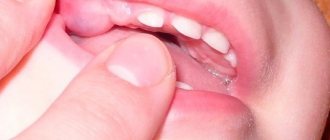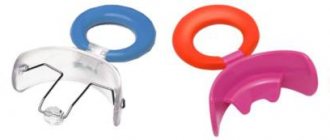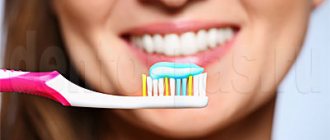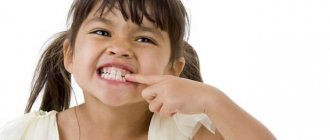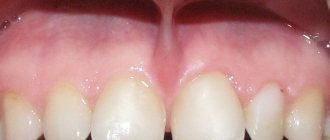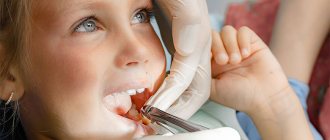- Causes of cracks
- Where cracks may appear
- Treatment at home
Cracks on the lips or are an unpleasant manifestation of cheilitis and, in addition to a cosmetic defect, they can hurt and be accompanied by other clinical symptoms, such as sticking in the corners of the mouth. The etiology can be harmless or, conversely, threaten health.
Some patients, in addition to cracking of the skin of the lips, complain of pain, discomfort while eating or talking, and are unable to open their mouth or smile normally. A crack in the lower or upper lip is easy to see, but the cause of the symptom is more difficult to determine. The doctor prescribes a comprehensive diagnosis. Regardless of the etiology, treatment of the symptom is conservative, and surgical intervention is sometimes required to eliminate the cause.
Causes of cheilitis
The reasons for stuck lips in children can be different. The main thing is to always remember that cracks are the result of failures of any processes occurring in the child’s body, or the consequence of incorrect actions, for example, lack of hygiene or licking dirty hands.
The main reasons for a child’s swelling in the corners of his lips are:
- lack of B vitamins – B6 (pyridoxine) and B12 (riboflavin). As a result, nails become brittle, skin becomes dry, hair becomes dull and split at the ends, gastrointestinal diseases and dysbacteriosis develop, and the habit of frequent lip licking appears;
- cold and windy weather increases the risk of a child developing lip seals;
- bacterial infections - pathogens enter the mouth through unwashed vegetables, fruits and hands;
- failure to comply with hygiene standards and rules - refusal to wash after active games or unwashed hands. As a result, bubbles with liquid appear at the corners of the mouth. After it leaks out, crusts and cracks form;
- fungal infection - acts as a side effect when taking antibiotics. After all, the immune system weakens, and metabolic processes are disrupted, as a result, dry skin and mucous membranes become more pronounced;
- a grayish-white coating covers the bumps on the child’s lips. The proliferation of fungi of the genus Candida, living in the oral cavity, begins. It is their penetration into the mucous membranes of the lips and corners of the mouth that triggers the process of symptomatic manifestations;
- poor nutrition – deficiency of iron and zinc, fresh vegetables and fruits in the child’s diet. This occurs against the background of rare consumption of leafy greens and dill with parsley, red meat and wholemeal bread, buckwheat porridge;
- ENT diseases - oral cavity, inflammation in the nasopharynx and respiratory tract, on the inside of the cheeks and gums;
- decrease in the protective function of the immune system - with frequent illnesses and weak immunity, jams in the corners of the child’s lips more often appear, and the disease often becomes chronic;
- allergic reactions to medication or lip care products - it is important to identify and eliminate the allergen with the help of an allergist.
Symptoms of seizure
Signs of the disease appear in stages:
- small bursting bubbles form at the places where the lips close, and the tissues turn red;
- roughening of the skin and the appearance of cracks at the site of burst blisters;
- healing and inflammation of erosion sites;
- regularly bursting skin during conversation or eating - the wound begins to bleed, this process is accompanied by pain;
- discomfort during speech, brushing teeth and eating.
Proper treatment of swelling in the corners of the lips in children eliminates them in 2 weeks. At the same time, open wounds are an ideal breeding ground for harmful bacteria. Secondary infection causes more pronounced symptoms and increases the inconvenience of the little man. In this case, treatment is delayed.
When to see a doctor
Establishing a connection between the causes and treatment of a child’s lip jam is an important part of choosing an adequate and effective treatment regimen. JSC "Medicine" (academician Roitberg's clinic) in Moscow offers consultations with first-class pediatricians. You can make an appointment by phone, on the clinic’s website or in person at the address: Moscow, 2nd Tverskoy-Yamskoy lane, 10.
Why do my child's lips get chapped?
Dry, cracked lips cause significant discomfort for both children and their parents. This unpleasant condition can be caused by several reasons.
1. The child receives too little fluid. At the same time, the overall water-salt balance of the body is disrupted, which affects the skin, primarily where it is especially thin and delicate. Dryness causes the skin to peel and lips to crack. Irritation may also occur.
2. Dry air indoors and outdoors. During the heating season, excessively dry air becomes an additional challenge. As soon as the central heating is turned on, the humidity in the rooms drops to an extreme minimum. And this immediately affects the skin, especially in children.
4. Licking lips. Trying to relieve the condition of their lips, children lick them. This gives them a short-term respite and relieves the unpleasant feeling of tightness, but over time it only worsens the situation. The skin of the lips dries out even more; deep cracks and irritation may appear on it, extending beyond the contour line. Seizures may appear in the corners of the mouth - areas of very irritated skin with deep cracks.
3. Adverse weather conditions. As a rule, the skin of the lips begins to become chapped and dry in the fall, when the air temperature tends to 0⁰C. In many regions, low temperatures are often accompanied by cold winds and high humidity.
In rare cases, it happens that dry lips develop during the warm season or cannot be restored using conventional skin care products. In this case, it is better to seek a recommendation from a pediatrician. This condition may indicate a lack of certain vitamins, as well as a possible malaise in the child.
Diagnostics
Incorrect treatment will cause great harm to your child. The diagnosis is carried out by a pediatrician. Mandatory examination methods are:
- general blood analysis;
- study of the performance of the thyroid gland;
- stool culture for dysbacteriosis;
- test to identify allergens;
- collecting medical history data - diet, presence or absence of bad habits, hygiene;
- consultations with related specialists - gastroenterologist, endocrinologist, allergist.
The purpose of diagnosis is to identify pathogens. In our clinic you can undergo all the necessary examinations.
Treatment of seizures in children
What to do when a child has sticking on his lips? Initially, establish the provocateur factor. Since simple healing of wounds without eliminating the causes causes frequent relapses of cheilitis. Moreover, each subsequent case of relapse brings more severe pain.
In addition to discomfort in everyday life, cheilitis spoils the aesthetic appearance. This is where complexes and psychological problems arise. Children of school and preschool age are afraid of severe pain on the cracks when actively moving their lips or smiling and refuse to read, sing out loud, or laugh.
How to treat lip jams in children? Elimination of cracks in a short time occurs when taking tablets. The duration of treatment is determined by the attending physician. Complete elimination of the problem is only possible if the use of ointments ends several days after the symptoms disappear.
The most effective remedies are antibiotics and antifungal medications. At the time of laboratory testing, a special sensitivity test is performed, the result of which determines the choice of a particular drug.
The activity of fungal pathogens is reduced by the action of tablets and specialized ointments. Daily use of such products along with local antibiotics brings visible results.
It is recommended that infected areas be treated before bedtime with wound-healing agents that have an antibacterial effect. Antiseptic solutions eliminate inflammation in the oral cavity and block the proliferation of fungi. It is allowed to introduce special vitamin and mineral complexes corresponding to your child’s age group.
Folk remedies and recipes
The use of traditional medicine recipes is quite often approved and even recommended by pediatricians for the treatment of cheilitis in children. However, using such products on your own is not recommended. It is necessary to consult a specialist.
Traditional medicine recipes are useful and effective, because they contain only natural and non-toxic products that have hypoallergenic properties and a wound-healing effect for erosions and cracks in people of any age and gender.
Mode of application:
- smear at least 5 times a day;
- apply lotions with herbal decoctions and immediately soften the skin by applying ointment.
Folk remedies recommended by pediatricians:
- sea buckthorn oil or rosehip/avocado oil;
- juice of fresh cucumber, Kalanchoe or aloe;
- oil solution of vitamins E and A – retinol and tocopherol in a scientific way;
- herbal decoctions - chamomile, calendula, string;
- lotions of propolis and butter in a ratio of 1 to 10 on cracks help relieve swelling, redness and fight inflammatory processes in the oral cavity - the mixture is used warm;
- lotions for cracks made from honey and butter in a ratio of 1 to 10 are used in the presence of an inflammatory process in the oral cavity, but are not used in the presence of allergic reactions. Honey can be replaced with a finely pureed sour apple;
- green tea - a cotton swab is applied to the sore spot soaked in strong tea leaves. It is important to use tea leaves in their pure form without additives;
- Earwax can heal wounds, but the remedy is banned by doctors.
Diet therapy
A balanced diet accelerates the healing process of wounds and cracks. The child's diet should be rich in vitamins and microelements. If the disease appears due to a lack of any useful substance, the effectiveness of treatment depends on replenishing its deficiency.
Recommended foods rich in B vitamins, iron and zinc - lean beef and liver, buckwheat and bran, eggs and cottage cheese, fermented milk products and brewer's yeast, leafy greens and dill with parsley, fresh vegetables and fruits, cereals and millet, black currants and low-fat fish.
Treatment at home
There are different ways to solve the problem of chapped lips. First of all, at home it is necessary to provide hydration, as well as normalize the water-salt balance in the body. To do this, it is recommended to drink at least 2 liters of liquid per day. It is necessary to treat dry skin on the lips with special moisturizing products - balms or oils.
If, while implementing these two tips, the skin continues to dry out, you can start taking vitamin A, B complex vitamins, vitamin C. Most of these components are in rye bread, butter, lean meat, eggs, black currants and parsley.
In pharmacies you can purchase special complexes of vitamins and microelements, universal vitamins to normalize immune functions. If the cause of chapped lips is not an infection, then the methods listed will quickly help cope with the problem.
Pharmacy products
Topical treatment for chapped lips is usually quite effective. The most popular pharmaceutical products are:
- Ointment based on calendula oils;
- Syntomycin ointment for the development of inflammation;
- Solkseril – stimulates tissue regeneration processes, relieves pain;
- Aevit is a complex of nutritional components in capsules. It can also be used as a local remedy, extracting the liquid from the capsule and applying it to wounds.
Creams for cracks soften and heal wounds well, relieve pain and protect delicate skin. The most effective are:
- Lanovit;
- Bepanten;
- Boro-plus.
Traditional methods for treating dry lips
Another method of effectively treating chapped lips in adults and children is the use of the following components separately or mixing them:
- sea buckthorn ointment;
- aloe juice;
- hemp oil or butter;
- a mixture of cottage cheese and apple pulp;
- vegetable oil with carrot pulp - used as a mask on the affected area;
- honey;
- butter with cocoa.
It should be taken into account that many of the listed components in some cases can cause allergies.
TOP 5 remedies for treating cracks
To keep your lip skin looking healthy, you need to drink 2–2.5 liters of plain water every day, excluding liquid food and other drinks. You should drink a glass every 2 hours. Even when cracks have already formed, water will help speed up healing, restore balance in the body, normalize metabolism and remove toxins. These processes will have a beneficial effect on the condition of the lips.
It is important to use high-quality nourishing and moisturizing products. They are easy to buy at the pharmacy; they are indicated for both prevention and treatment:
- Syntomycin emulsion - it not only heals cracks, but is characterized by antifungal, antibacterial and antiviral effects. The product becomes a real salvation when simple moisturizing does not help. You need to buy the drug in a minimum concentration and apply it to the cracked areas with a cotton swab 3 times a day. It is recommended to continue treatment for 1 week.
- Sea buckthorn oil is a highly effective and affordable product. It quickly nourishes and moisturizes lips, tightens wounds, disinfecting them. Apply several times a day with a cotton swab until the effect is achieved. The course of treatment is no more than 2 weeks.
- Bepanten cream or ointment is a fatty product. In the morning before leaving the house, it is recommended to apply cream to the skin, and use ointment at home, because its effect is more pronounced. Bepanten promotes tissue restoration and heals cracks. Apply it 2-4 times a day for 2 weeks.
- Boro-plus is a cream with a natural composition that kills pathogenic microbes and heals wounds, preventing their reoccurrence. It needs to be applied 2 times a day for 1 – 2 weeks.
- Solcoseryl. The main component of the drug is cattle blood dialysate. The product is used and shows good results for the treatment of oral pathologies, skin injuries and dental diseases. It activates metabolic processes, improving metabolism and promoting tissue healing. Solcoseryl also has a local anesthetic effect; it covers the crack on the lip with a protective film and protects the wound from germs and negative environmental influences.
What foods and vitamins should you consume?
Even when the reason for the formation of wounds on the lips is not vitamin deficiency, a course of vitamins will not be superfluous. The most popular include:
- Multitabs;
- Vitrum;
- Complivit;
- Centrum.
Essential foods in the diet include:
- fruits and vegetables;
- peas;
- spinach;
- cottage cheese;
- berries;
- soy;
- eggs.
Correct selection of cosmetics and what should not be in the composition
If your lips are often chapped, you need to pay special attention to the quality of cosmetics. If you choose a low-quality product, you can seriously harm your lips. Lip balms should contain vitamins B, A and E.
It is prohibited to use lipsticks containing Vaseline and mineral oils. They cover the skin with a film without moisturizing at all.
If crusts and cracks often appear, it is recommended to purchase beeswax-based products containing glycerin.
The best method for eliminating the problem of cracked lips is its prevention, that is, the implementation of prevention. The main way is to try to eliminate all provoking factors from life or soften their influence with the help of special lip products.


